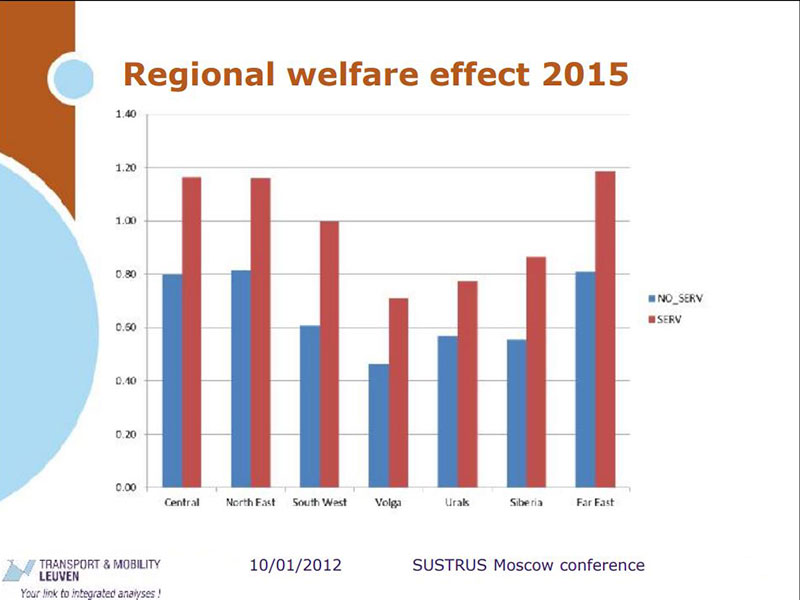SUST-RUS
07.10
From 2009 to 2011
The SUSTRUS project team developed a spatial-ecological-economic model for Russia to narrow the gap between local and international sustainability practices and provide policymakers with specific indicators. TML contributed to the model methodology and created a comprehensive dataset, including social and environmental indicators.
The SUSTRUS project team developed a spatial-ecological-economic model for Russia based on the most recently available methodology on general equilibrium modelling and energy modelling.
The goals of the model are as follows:
Sustainability is a complex term and has ecological, social, and economic dimensions. The SUSTRUS consortium incorporated these different elements into the model. We started from a general equilibrium model and expanded it with environmental and social modules. This was done on the basis of European and international research.
Given Russia's large surface area and the large differences in the economic and social structure of its regions, it was important to introduce a regional dimension into the model. Therefore, the new economic geography (NEG) methodology was applied as the basis for the model construction. The current quality of static data for the Russian Federation allowed seven federal districts to be included in the model.
The project generated the following outputs:
The main output is the full SUSTRUS model, programmed in GAMS, publicly available as D9.3. The full dataset is also available and was linked to the model. The dataset includes all regional-level social accounting matrices classified according to the official ISIC classification into 32 sectors, elaborated regional trade balances, energy consumption and production, foreign investment, social data, and emissions.
The SUSTRUS project team developed a spatial-ecological-economic model for Russia based on the most recently available methodology on general equilibrium modelling and energy modelling.
The goals of the model are as follows:
- Reduce the gap between Russian, European, and international research practices in sustainable policymaking.
- To provide Russian policymakers with a set of specific indicators focused on their individual policy domains. Each indicator belongs to the social, economic, or environmental dimension and is calculated directly by the model.
- To support European and Russian policymakers as well as the international community in their short- and long-term sustainability policy choices.
Sustainability is a complex term and has ecological, social, and economic dimensions. The SUSTRUS consortium incorporated these different elements into the model. We started from a general equilibrium model and expanded it with environmental and social modules. This was done on the basis of European and international research.
Given Russia's large surface area and the large differences in the economic and social structure of its regions, it was important to introduce a regional dimension into the model. Therefore, the new economic geography (NEG) methodology was applied as the basis for the model construction. The current quality of static data for the Russian Federation allowed seven federal districts to be included in the model.
The project generated the following outputs:
- A literature review with a mathematical description of some key model principles (D1.1).
- An elaboration of the model methodology (D1.2).
- A raw dataset with all economic data available for 2006 to balance and possibly further improve the regional dataset in the future (D2.1, D2.2).
- The mathematical basis of the model with all necessary analytical derivations (D3).
- A consistent system of indicators, which can be computed by the model (D4).
- A description of the basic model (D5) extended to include the environmental, social, and international modules. All dimensions of the model can interact and parts of the model can be turned on or off, according to the policy under study (D8).
- Sensitivity analysis of model results (D9.1).
- A description of some key model simulations (D9.2).
The main output is the full SUSTRUS model, programmed in GAMS, publicly available as D9.3. The full dataset is also available and was linked to the model. The dataset includes all regional-level social accounting matrices classified according to the official ISIC classification into 32 sectors, elaborated regional trade balances, energy consumption and production, foreign investment, social data, and emissions.


